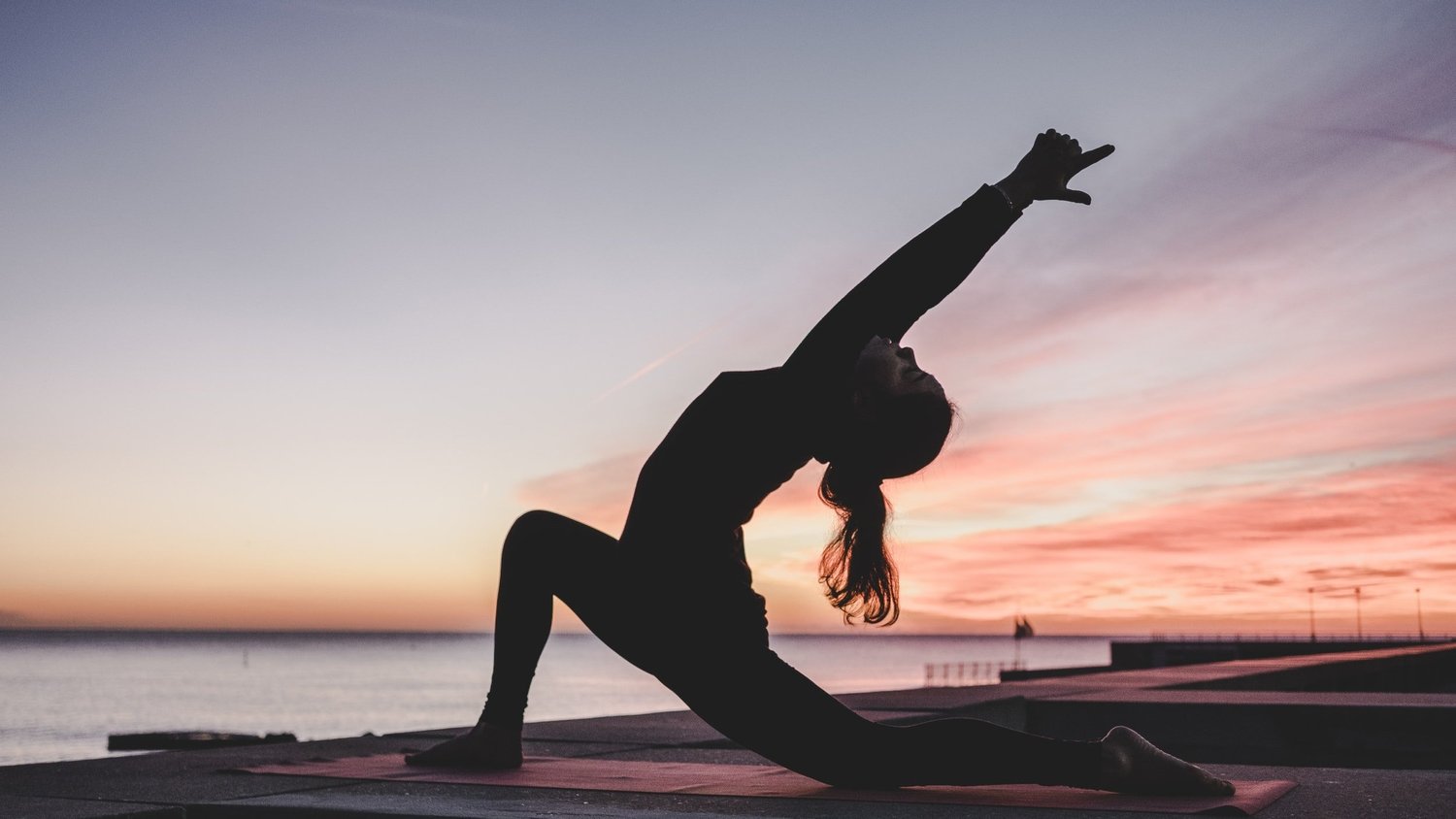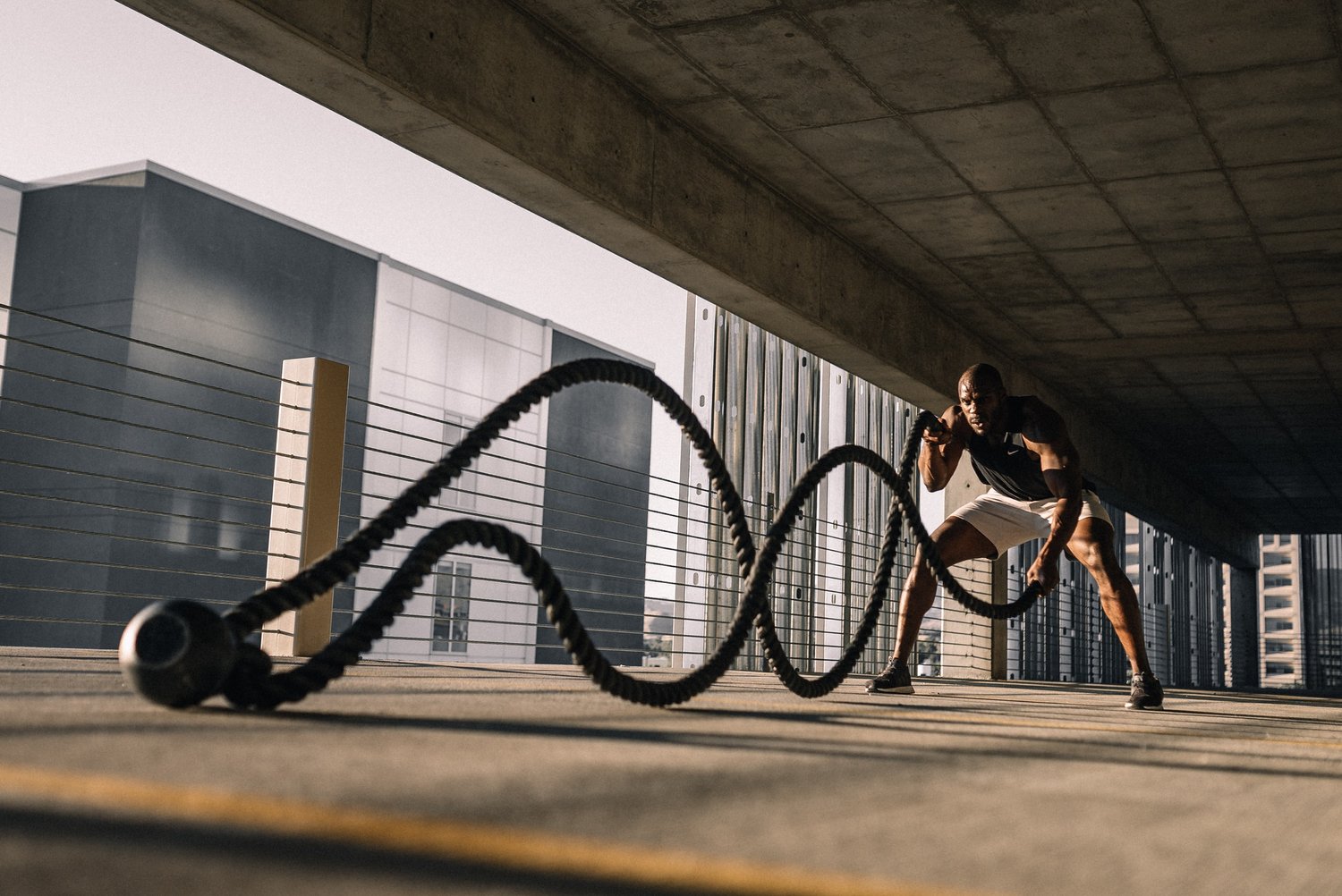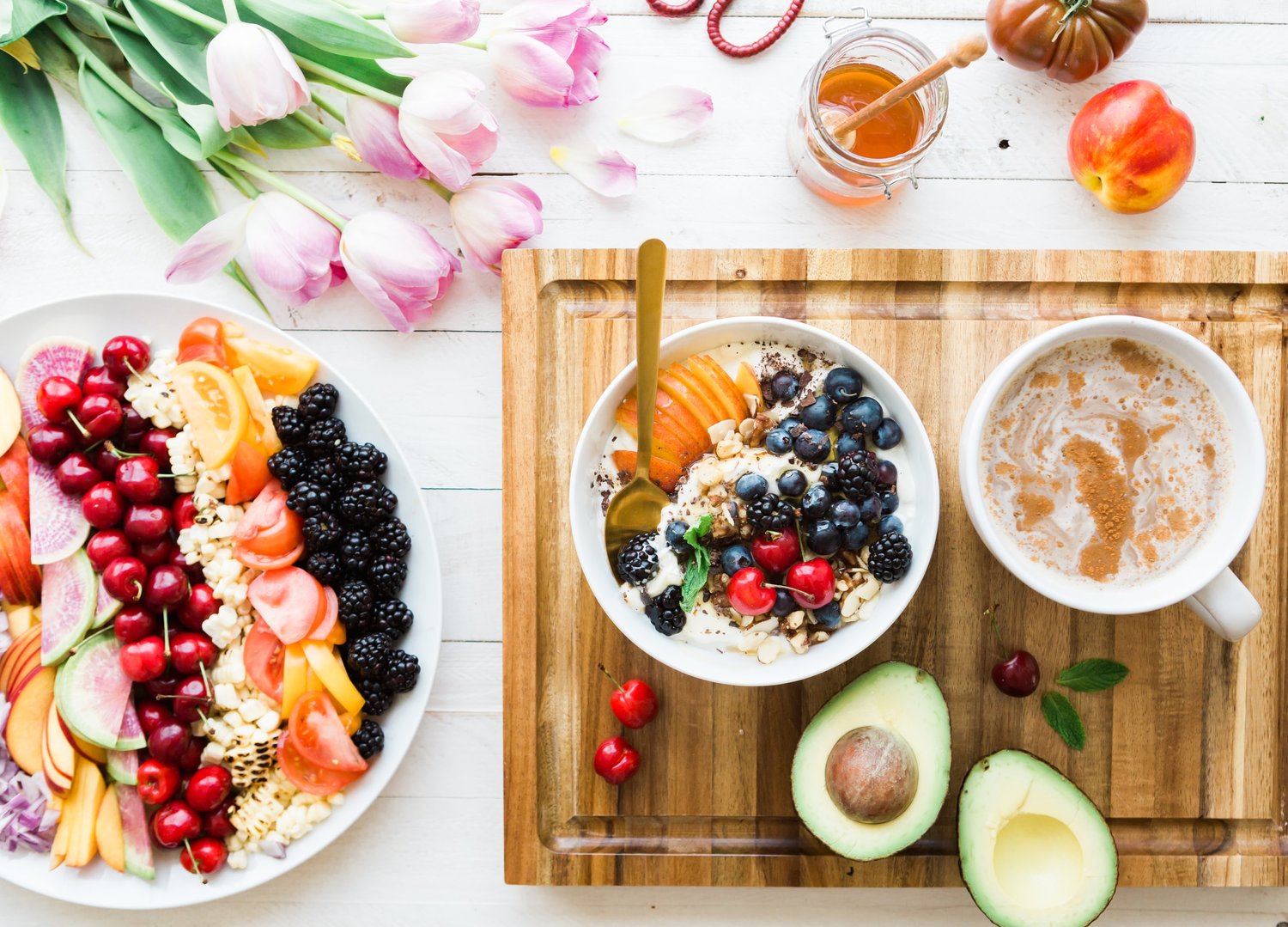WHY SOME PEOPLE ARE MORE FIT THAN OTHERS?
THE ANATOMY OF FITNESS
Physical fitness can be defined as the state of physical well-being and health. In the modern-day age, our society has become health-conscious to a greater degree than human beings ever were. So naturally, the idea of achieving the optimal physically fit body is something that appeals to all of us. Throw in the factor of aesthetic attraction, and the appeal for this idea becomes even stronger. That leads to a lot of good… but just like everything, this shift of perspective has some downsides.
WHAT MATTERS MORE?
Not only has this shift created false and exaggerated standards of physical fitness, but it has also put an abnormal emphasis on how this supposed fitness looks, rather than emphasizing the feel of it. And that isn’t even the biggest problem.

BENCHMARKS OF PHYSICAL FITNESS:
Before we go into the details, let me ask a simple question. How do you know how physically fit you are? What yardstick will you use to measure your fitness? Is there even a yardstick?
Well, there are many actually, and knowing how to gauge our fitness is the first step to choosing the right path to our fitness goals and evaluating whether the regimens we have adopted are working or not.
Take, for example, the resting heart rate. It is a well-defined measure of health and fitness. A low resting heart rate in older adults can predict a relatively disease-free life.¹
Body Mass Index (BMI) is another benchmark to go by. It determines the normal range of weight in accordance with your height.²
Similarly, you can test your endurance and stamina through different fitness exercises like the normal number of push-ups and sit-ups you should be able to do depending upon your age.
ONE ROUTINE TO RULE THEM ALL?
In their eagerness to achieve this perfectly fit body, people have become blind to the fact that just like a single key cannot fit every lock, in the same way, a general workout and fitness routine cannot work for everyone. And the reason is simple. We have way too many differences in our builds, skeletal structures, fat distribution, age, and general state of health to allow for a similar response to exercise.
PERSONALIZED TRAINING:
Studies have proved that indulging in personalized tailored exercises is more beneficial than following generalized workout patterns. This is because personalized training caters to the individual’s needs keeping in view her/his body type, composition, health status, etc.

RESPONSE TO EXERCISE:
In order to study the response to various exercise patterns, we need to know the effects of exercise and how they can be measured.
Various effects are manifested physically in the form of improved skeletal and muscular strength, better stamina, enhanced immunity, improved cognition, memory, etc.
The measurable factors include changes in systolic blood pressure, VO2max levels, heart rate, respiratory rate, changes in HDL-Cholesterol levels, etc.³
VARIATION IN RESPONSE TO EXERCISE:
Not all individuals benefit equally from the same exercise regimens. An exercise that improves the aforementioned parameters in one individual would have minimal effect on another individual. These interpersonal variations can be attributed to various factors;
GENETIC MAKEUP:
The genetic makeup of every individual is unique. A study conducted at ARU shows that genes play an important role in determining the response to exercise in addition to other factors.⁴
Additionally, BDNF, a protein product of a gene, is produced as a result of exercise. The carriers of this gene have lesser neurocognitive benefits of exercise as compared to those who lack this gene.⁵
DIET AND NUTRITION:
Exercise produces its effects on the body through changes in metabolism. There is increased consumption of nutrients, which must be replenished from the outside and our response to exercise depends a lot on what we put inside our bodies.

Consumption of adequate amounts of water and a diet rich in carbohydrates, proteins, chondroitin is essential to get the beneficial effects of exercise. Additionally, an antioxidant diet is necessary to detoxify the free radicals produced as a result of metabolism. This is especially important considering the goal of age reversal that is key to achieving fitness.⁶
Contrary to this, consumption of unhealthy diets rich in fat will reduce the effect of exercise; the fat that you burn through exercise is replenished through diet, so the net loss is minimal.
BODY TYPES:
There are three body types based on muscular and skeletal build and metabolism.
Ectomorphs are thin lean with a fast metabolism.
Mesomorphs have effective metabolism.
Endomorphs are bulky with a slow metabolism.
Mesomorphs can gain and lose weight easily but Endomorphs gain easily and lose slowly owing to their slow metabolism.
These body types have different responses to diet and exercise, for example, mesomorphs and endomorphs will easily gain weight from sugar consumption. The exercise pattern also varies amongst these body types.
Ectomorphs will benefit from exercise based on gaining muscle strength and need a high protein and balanced carbohydrate and fat diet to achieve normal body composition. Endomorphs on the other hand need fat loss and muscle strength-based exercises.⁷
So you see it’s imperative to tailor your routine in accordance with your body type.
FAT DISTRIBUTION:
There are two body types based on fat distribution. A pear-shaped body has subcutaneous fat in the thigh and hip region and is more common in females, whereas an apple-shaped body has fat in the abdominal region, which is more common in males. Visceral fat around the organs is more harmful as compared to subcutaneous fat. Therefore, fat losing exercises are recommended in people with visceral fat. Depending upon what type you have should be considered when forming an exercise routine.⁸

STATE OF HEALTH:
The exercise pattern needs adjustments keeping in view the health status of an individual. A person suffering from a chronic debilitating condition such as cancer should not be recommended exercise as a goal to stay fit.
Some conditions such as hernia, foot ulcers, and cataracts require temporary adjustments whereas some conditions such as aneurysm, arrhythmia, and end-stage heart failure are a contraindication to vigorous exercise.⁹
FITNESS GOALS:
The fitness goals that a person wants to achieve also determine his workout regimen. The aim initially is to achieve normal body composition and energy balance and then indulge in higher goal-based exercises.
OTHER FACTORS:
Preadolescents and adults benefit more from exercise than the elderly. Similarly, sleep patterns, gender, environmental factors also seem to play a role in determining the response to exercise.¹⁰
YOUTH AND FITNESS:
Our youthful bodies are more physically fit and that is a fact. And as that fitness slowly begins to wither away, we look for means to stall its deterioration. We look for exercise routines and diet changes that would maintain our fitness. Why don’t we simply try to orient our efforts towards reversing the age-related changes that initiated the physical deterioration? No brainer, right?
We know that the apparent changes we see with aging are just a manifestation of cellular aging on a macro scale. So targeting cellular health and age reversal as the goal for all of our physical fitness exercise and diet routines could be the defining feature of our hike back to fitness. My personal experience is the corroborating proof.
I was hell-bent on proving that the principles of age reversal and restoring cellular health are key to restoring optimum physical fitness. After 10 months of a specialized diet, sleep, and exercise routine the results came in:
• Resting heart rate dropped “back” from 74 bpm down to 48 bpm.
• My total body weight dropped “back” from 270 lbs to 170 lbs.
• My body fat dropped “back” from 34% down to 7%.
• My waistline dropped “back” from 42 inches to 28 inches.
• My libido, vitality, endurance, and energy returned to that of my college years
And this is how the dream of LiveYounger was born. My book Lead A Horse To Water ¹¹ elaborates this concept in a little more detail.
SUMMING IT UP:
The differences in response to exercise should govern the practice of personalized workout and wellbeing programs. It is also clear from the above discussion that all of our plans and efforts if not oriented towards a proper goal, would go to waste.
The most important thing to understand regarding this is that the simple formula to staying healthy and fit is to keep ourselves young and youthful. Let the chronological clock keep on ticking but take control of your biological clock. Take control of your cellular health, and choosing the right path to fitness will become a piece of cake. The journey will be tough, but the destination will make it worth your while!
“WE KNOW THAT THE APPARENT CHANGES WE SEE WITH AGING ARE JUST A MANIFESTATION OF CELLULAR AGING ON A MACRO SCALE. SO TARGETING CELLULAR HEALTH AND AGE REVERSAL AS THE GOAL FOR ALL OF OUR PHYSICAL FITNESS EXERCISE AND DIET ROUTINES COULD BE THE DEFINING FEATURE OF OUR HIKE BACK TO FITNESS.”
— NIDAL SAKR
Bibliography
- D. A. S. Silva, T. R. De Lima, and M. S. Tremblay, “Association between Resting Heart Rate and Health-Related Physical Fitness in Brazilian Adolescents,” Biomed Res. Int., vol. 2018, 2018, doi: 10.1155/2018/3812197.
- F. Q. Nuttall, “Body Mass Index: Obesity, BMI, and Health: A Critical Review,” Nutr. Today, vol. 50, no. 3, p. 117, May 2015, doi: 10.1097/NT.0000000000000092.
- C. Bouchard and T. Rankinen, “Individual differences in response to regular physical activity,” Med. Sci. Sports Exerc., vol. 33, no. 6 Suppl, 2001, doi: 10.1097/00005768-200106001-00013.
- H. C. Chung, D. R. Keiller, J. D. Roberts, and D. A. Gordon, “Do exercise-associated genes explain phenotypic variance in the three components of fitness? A systematic review & meta-analysis,” PLoS One, vol. 16, no. 10 October, Oct. 2021, doi: 10.1371/JOURNAL.PONE.0249501.
- A. Ieraci, A. I. Madaio, A. Mallei, F. S. Lee, and M. Popoli, “Brain-Derived Neurotrophic Factor Val66Met Human Polymorphism Impairs the Beneficial Exercise-Induced Neurobiological Changes in Mice,” Neuropsychopharmacology, vol. 41, no. 13, pp. 3070–3079, Dec. 2016, doi: 10.1038/NPP.2016.120.
- W. Aoi, Y. Naito, and T. Yoshikawa, “Exercise and functional foods,” Nutr. J., vol. 5, no. 1, pp. 1–8, Jun. 2006, doi: 10.1186/1475-2891-5-15/TABLES/1.
- “THE 3 SOMATOTYPES.” https://www.uh.edu/fitness/comm_educators/3_somatotypesNEW.htm (accessed Feb. 20, 2022).
- M. E. Thoma et al., “Comparing Apples and Pears: Women’s Perceptions of Their Body Size and Shape,” J. Women’s Heal., vol. 21, no. 10, p. 1074, Oct. 2012, doi: 10.1089/JWH.2012.3634.
- M. A. Fiatarone Singh, “Exercise and aging,” Clin. Geriatr. Med., vol. 20, no. 2, pp. 201–221, May 2004, doi: 10.1016/J.CGER.2004.03.003.
- F. Herold et al., “Causes and Consequences of Interindividual Response Variability: A Call to Apply a More Rigorous Research Design in Acute Exercise-Cognition Studies,” Front. Physiol., vol. 12, p. 1064, Jul. 2021, doi: 10.3389/FPHYS.2021.682891/BIBTEX.
- N.Sakr, “Lead A Horse To Water”


